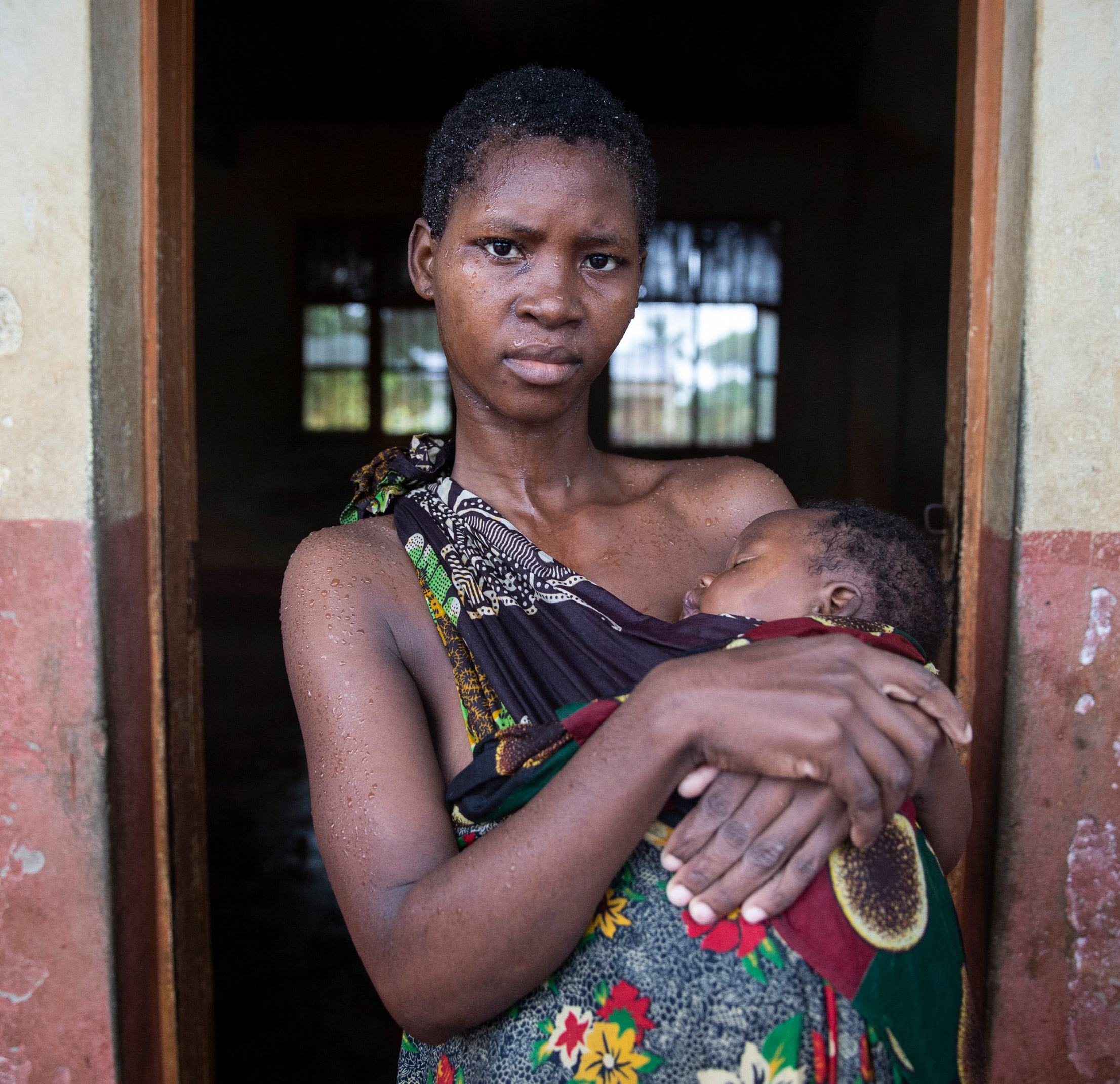Humans In The Climate Crisis
We can’t leave anyone behind
As rich countries continue to emit greenhouse gasses at their highest-ever concentration levels, extreme weather is decimating more and more parts of the world.
Time is running out for millions of people who are already losing their lives, their homes and their livelihoods to climate change. These people have contributed least to the global climate emergency, yet they are being hit the hardest.
Climate-related damage is happening at a scale that the humanitarian community and people on the front lines cannot manage.
We need to pressure world leaders to take meaningful climate action for those who need it most. They must commit to putting vulnerable people front and centre at the UN climate summit (COP26) in November.
Through the Paris Agreement, rich countries had pledged to provide US$100 billion a year to help poorer countries tackle climate change through mitigation and adaptation actions. But the rich countries are falling behind in their commitments. Solidarity in the face of the climate crisis begins with developed countries fulfilling their promise to help the most vulnerable communities adapt to and mitigate the effects of climate change.
Here are stories of people directly affected by climate change, from Africa to Asia and Central America.
"The climate emergency is a race we are losing, but it is a race that we can win," said UN Secretary-General António Guterres.
And in the race against the climate crisis, we can’t leave anyone behind.

Bintu carries one of her goats. Photo OCHA/Damilola Onafuwa
Bintu Abiso, Nigeria
Bintu Abiso, a mother of eight, was displaced from Mafa in 2016 due to the ongoing violence in north-east Nigeria. She trekked to Gongulong for safety and has lived there ever since.
In September 2020, the Food and Agriculture Organization (FAO) gave her four goats (one male and three females) and trained her how to care for them. Since then, her goats have multiplied to eight. But for Bintu, raising her livestock is not without challenges.
"Before, rain started early and lasted long. Now rainfall is short, it does not start early but it ends early. Before, we had a high crop yield and enough grass for animals to feed. Now the crop yield is less and there is sparse vegetation. It even affects the trees."
"There is not enough food, not enough water, not enough animal feed and not enough firewood. It is hard to get water for my animals, the feeding is more expensive and the heat has caused some goats to have miscarriages. So, we also have to engage in small trade, buying and selling."
FAO provides regular support to Bintu to help her maximize her yield and reduce casualties among her livestock.
"The climate is changing. The dry season is longer and very hot. It affects everything: our environment, our livelihoods and our animals."

Abdus and his grandson stand on a raft made from banana trees in front of their submerged house in Char Bara Dhul, northern Bangladesh. The family sleep on a boat as they wait for the water to subside. Photo WFP/Sayed Asif Mahmud
Abdus Samad Sarker, Bangladesh
When heavy monsoon rains flooded the northern districts of Bangladesh in the spring of 2020, Abdus Samad Sarkar and his wife, Monowara, were living in a small hut near the Brahmaputra, one of the world’s largest rivers. Their house was submerged in the flood waters.
During the monsoon season, rivers can burst their banks and inundate large swathes of low-lying country. Inside Abdus’s house the water level rose to waist height, destroying many of the family’s belongings.
Just before the floods, Abdus received a cash grant that helped him relocate his livestock to higher ground while he waited for the water to subside. Like most people in this part of Bangladesh, livestock is his main source of income.
The cash grant was funded through the UN’s Central Emergency Response Fund (CERF*) and channelled through humanitarian partners like the World Food Programme (WFP). CERF uses the latest in data and predictive analytics to forecast crises and their likely impacts, and then takes action before they hit. This innovative approach enables families like Abdus’s to receive cash before the floods arrive, giving them time and resources to prepare for the flood’s impact on their homes, lives and livelihoods.
"During the day we go to our neighbour’s house, but at night we sleep on a boat," he says. "I’m 78 years old and I don’t have any job prospects, so receiving this money helps me feed my family."

Portrait of Marta. Photo UNICEF/James Oatway
Marta Domingo, Mozambique
Marta Domingo, 26, gave birth in the Muada accommodation centre, outside Beira, two weeks before this photo was taken.
"I arrived in the camp on cyclone day. The whole house had collapsed. I fell when I was running, and I was seeing all the houses collapsing."
Marta went into labour two weeks after arriving at the camp. She gave birth to twins, a boy and a girl, but the boy died the next day. Marta thinks he was injured when she fell while running to safety. She now devotes all her energy to keeping her remaining baby, Malina Seba, alive and healthy.
"My baby boy, he has no name; I still haven’t given him a name. I am recovering but sometimes I feel pain, I am sad. Malina is doing ok. Sometimes she doesn’t breastfeed. I don’t think she knows she lost her brother."
"If I get a future, if I go home, I will go back to farming to survive. I want my baby girl to have food and clothing. The cyclone has taken everything. But I want her to go to school."
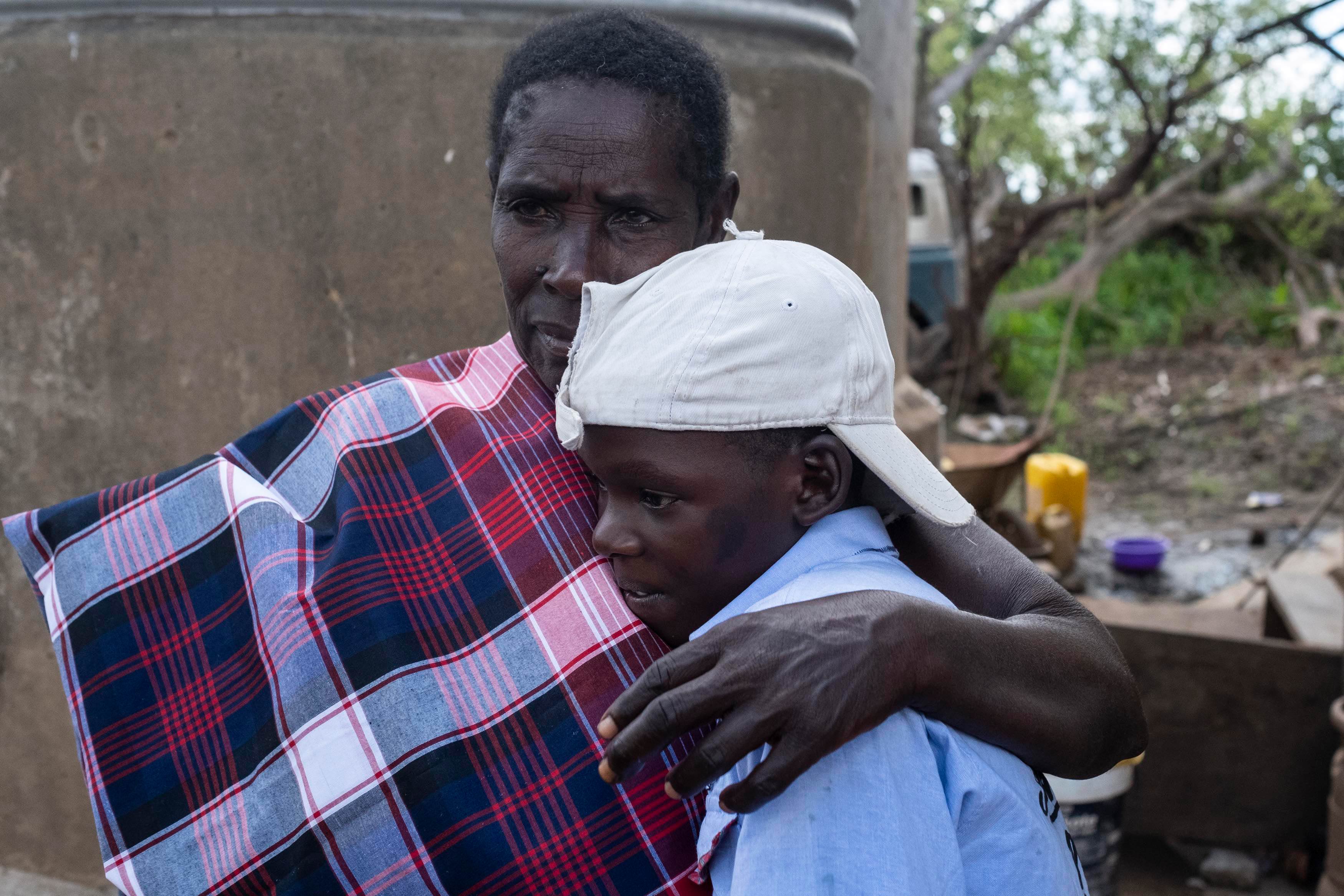
Lorenço hugs his grandmother, Menace, when returning home to Buzi. Photo UNICEF/De Wet
Lourenço Custodio, Mozambique
In March 2019, the flood waters created by Cyclone Idai destroyed the house where 14- year-old Lourenço Custodio was living with his grandparents and aunt. After fleeing, he boarded a helicopter with a friend for evacuation to the Samora Machel school in Beira.
During an assessment, a social worker from the Mozambican Government realized that Lourenço was alone, with no relatives. He was transferred to the Centro Infantario, where he lived for a month. With the support of UNICEF, Save the Children, Centro Infantario and the Provincial Directorate for Social Welfare of Beira, he eventually returned home safe and was reunited with his family in Buzi.
On 15 March 2019, Cyclone Idai ripped through central Mozambique. Floods swept through communities, destroying everything in their path. Thousands of families, many with young children, sought safety on the tops of trees and high buildings waiting to be rescued.

Djeneba Diallo (right) waits at the water point. Photo OXFAM/Samuel Turpin
Djeneba Diallo, Burkina Faso
Djeneba Diallo is from the fulani community. She is a herder in Balgouma village, near Kaya, in Burkina Faso.
"Our village welcomed a lot of people displaced over the last year. We all get along. There are no conflicts. But their arrival creates a lot of problems for our access to water. There is only one water point for all of us and for the livestock, which take priority. We can arrive at 6 in the morning and wait until midday."
Aizata Sawadogo fled her home in Arbinda to find security in Balgouma. She confirms: "Since I arrived here 10 months ago, there is no conflict. Even if I am from a different community.
The village’s population doubled in a year. The one water point is used by over 700 people.
Violence, insecurity and extreme weather have impacted millions of people in the Sahel. Some of the worst violence and displacement have occurred in areas that are the poorest and most affected by climate change, where armed groups have exploited tensions over resources and shrinking arable land.
Climate change has a direct and an indirect impact on affected populations: it increases competition on already limited resources, and it directly affects production and people’s capacity to provide for themselves.
Across the Sahel, 5.5 million people are uprooted – more people than ever before. Large-scale displacement is straining weak services and scarce natural resources, and food insecurity is reaching record peaks, with over 14 million people struggling with crisis or emergency levels of food insecurity – a number that is expected to grow during the lean season.
"Water collection takes us so much time that we cannot go to the market again to sell and buy enough to feed ourselves."
"We all live in peace. The only problem is water. All our clothes are dirty, and it creates a lack of hygiene that makes us fear diseases like diarrhoea, especially for our children."
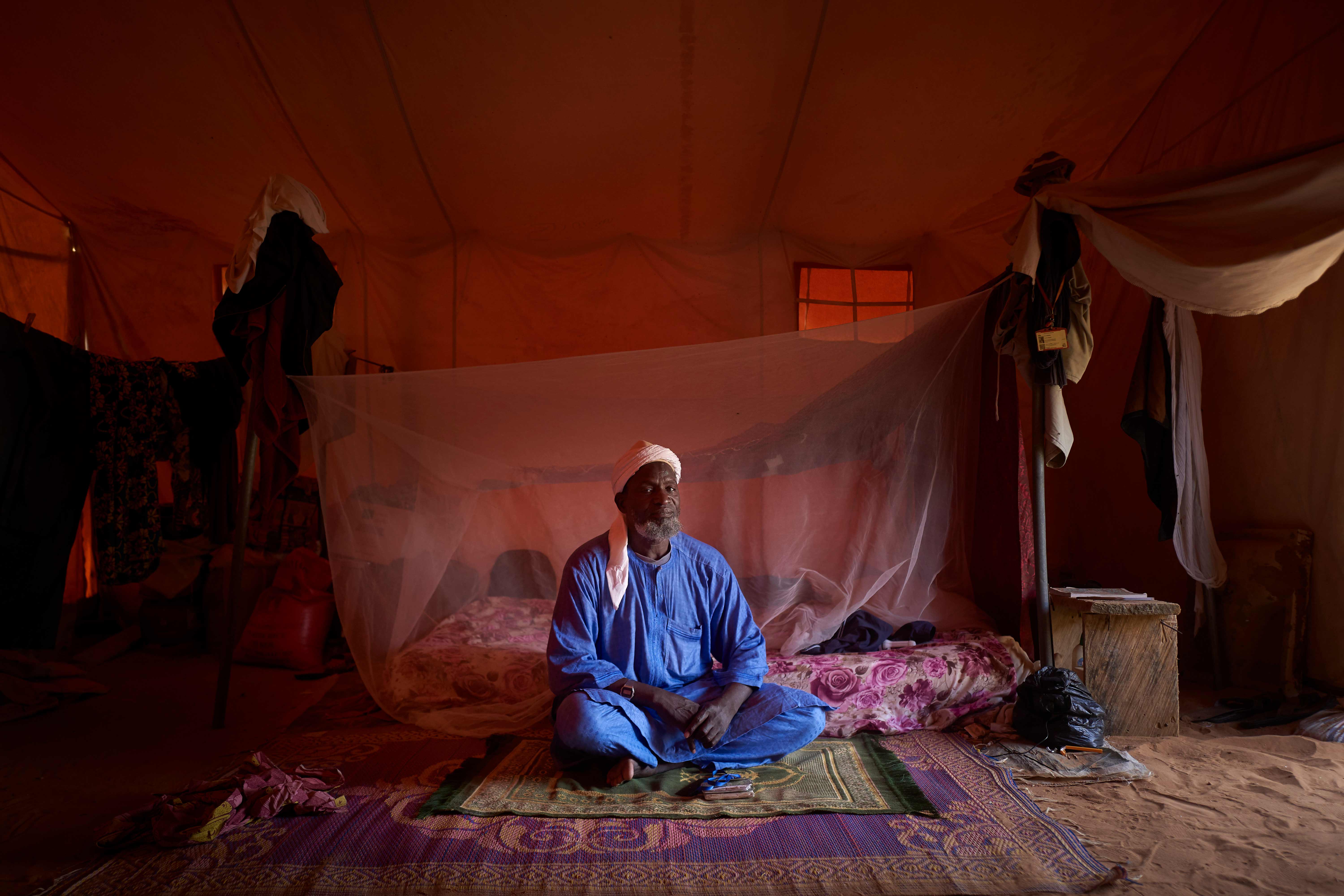
Portrait of Adam in his tent. Photo OCHA/Michele Cattani
Adam Arouna, Niger
Adam, a retired imam, has lived next to the river all his life. But the dramatic floods of August 2020 destroyed his house, forcing him and his family to flee. They sheltered in a school for a few weeks and then relocated to the Gamou displacement site.
"When the floods came last year, we were only able to save the minimum: our documents and the mattresses. Water went up to our chest."
"Years ago, the river was deep but now it is full of sand and stones. As a result, it can no longer contain water."
"I feel like a foreigner in this camp. When we used to be at home, everyone knew each other; we often met with our neighbours to talk. There is no such opportunity here."
"I cannot see my river anymore. It pains me so much. After all these years living by the water. The river is life. I used to look at it and it would clear my mind. When I felt tired, I would dive into the river and instantly feel better."
Niger experienced its worst-ever flooding in August 2020. Entire neighbourhoods in Niamey were washed away. Heavy rainfall, coupled with rising water levels in the major river basins, has led to severe flooding across Niger. This has caused displacement, increased food insecurity and exacerbated the country’s humanitarian situation.
The Gamou displacement site was built in October 2020 to host people affected by the floods in Niamey. Over 7,000 people currently live there. Due to logistical and budgetary issues, humanitarian aid stopped being delivered to the site in April 2021. More than half of the site’s residents have no income-generating activity, and there are many single-women headed households. The health centre is no longer functional and the shelters are in poor condition. When it rains, people must stay awake all night to collect water and prevent it from entering their tents.
"I just hope we will be safe in the future. We must keep our faith."
Niger’s authorities will relocate people to another site and give each household a 250 m2 plot of land, free of charge. Over 12,000 plots are necessary to host all affected people. About 2,000 plots will be made available in the first allocation.
"I have lived next to the river all my life and I have never seen anything like this."
"I believe this is a message from God. He is the one to tell us what to do and not do. He always sends catastrophes when he is unhappy with man’s behaviour. God is patient, but when humans do not listen to him he sends catastrophes to remind them of his presence."
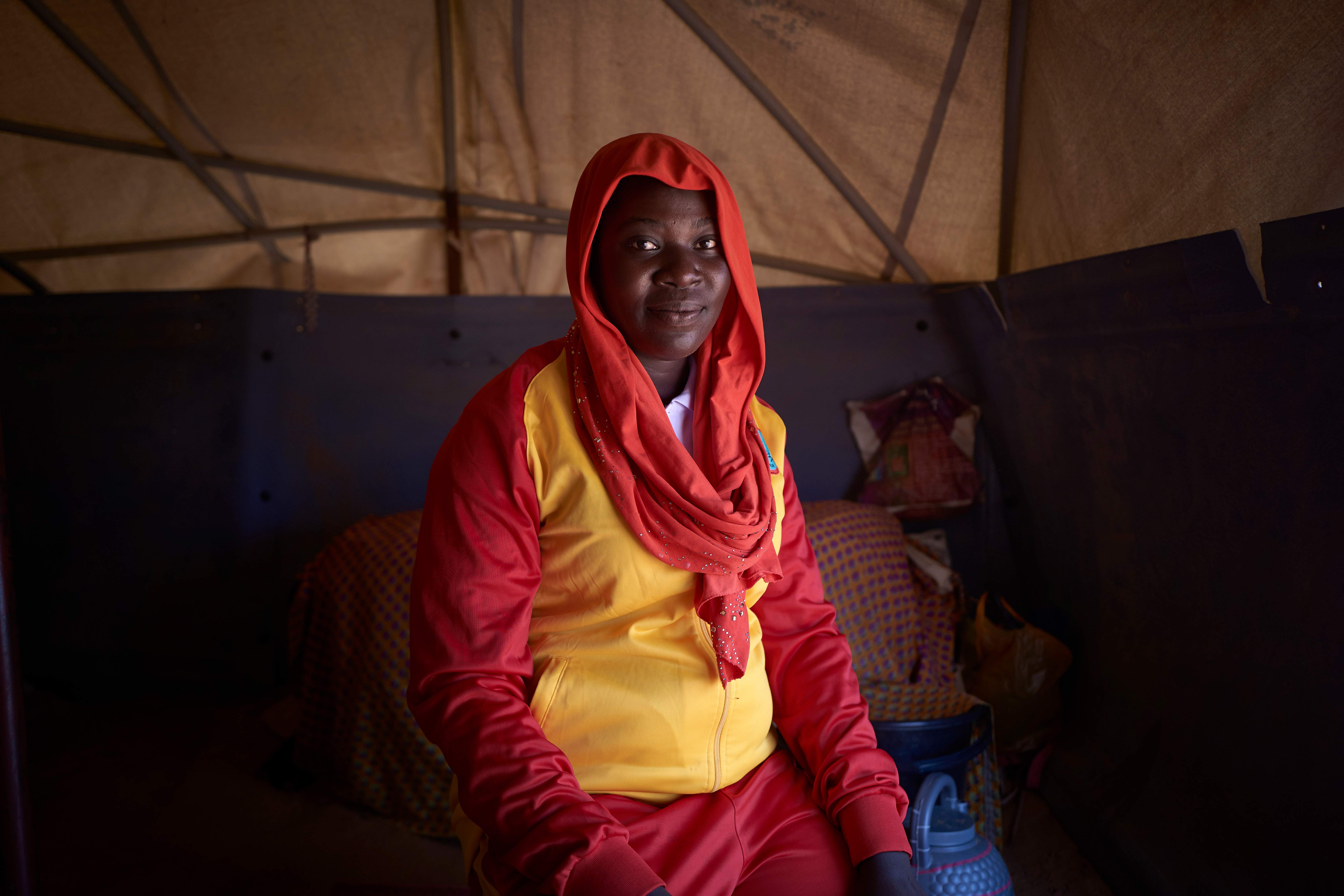
Portrait of Amsatou in her tent. Photo OCHA/Michele Cattani
Amsatou Abdoulaye, Niger
Amsatou, 28, is a sports teacher and a member of Niger’s national handball team. She was affected by the floods that destroyed entire neighbourhoods in Niamey in August 2020.
"The day of the floods I woke up and water was already inside the house. The first thing that came to my mind was to take sand to build barricades, but it was already too late. So I helped my mother and my three children get out. Shortly after the house collapsed. We couldn’t save anything except some clothes."
"I train three times a week with the national team, and I also volunteer in the camp management committee. That’s quite a bit of work. I’ve always loved sports. I also wanted to bring medals to my country, represent it abroad and make it proud. Since April I haven’t received any assistance. Everything I earn through handball is for my mother and my three children. I dream of being able to build a good house for them."
"Only God knows why this happened. I never saw anything like this before. There is too much sand in the river now. In 2018, for the first time, I saw someone walk across the river during the dry season. This had never been possible before."

Shahidul and Rowshan with their daughters, Sayma Khatun and Sumaiya Khatun, under a mosquito net on the boat where they slept after their house was submerged. Photo WFP/Sayed Asif Mahmud
Rowshan, Shahidul and their daughters, Bangladesh
In early 2020, Rowshan Ara and Shahidul Islam lost the only land they owned to river erosion. This phenomenon is made worse by climate change and more intense monsoons.
Rowshan and Shahidul had taken a three-year lease for new land in their village for US$118. But in June 2020, the house they had just built was submerged in a second round of flooding that impacted thousands of people living in low-lying areas. Rowshan was among those who received a cash payment of $53 from WFP, which allowed her to buy food and keep her family safe as they waited out the flooding.
Such cash transfers empower families to prepare for looming hard times by purchasing essential supplies, such as food and medicine, strengthening their shelters, protecting their assets and moving to safer areas. Anticipatory action is a core element of the new business model that humanitarian organizations need to adopt in order to effectively respond to the rapidly evolving landscape of climate risks.
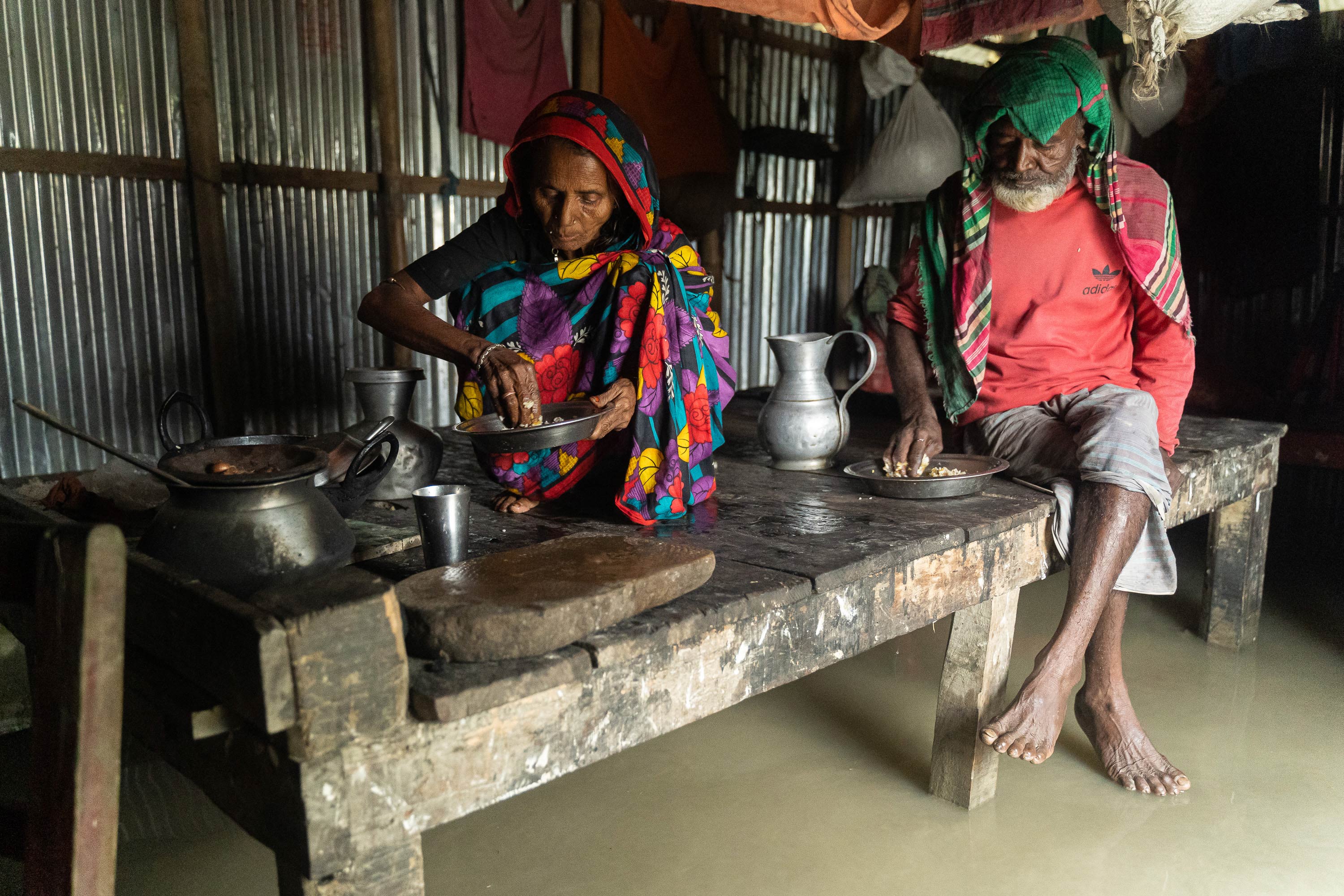
Johura and Bokkor eat lunch on their bed that was raised to prevent water damage. Photo WFP/Mehedi Rahman
Johura and Bokkor, Bangladesh
Just as flood waters were rising and threatening her home, Johura received a cash transfer of $53 as part of the anticipatory financing response led by CERF and its humanitarian partners. She and her husband, Bokkor, were able to buy dry food to last them through the flooding.
Bangladesh has always been prone to storms and flooding, but climate change is causing more frequent and intense cyclones. The severe floods that struck the country in 2020 are considered one of the most severe floods of the last few decades, affecting 5.4 million people in northern, central and north-eastern areas.
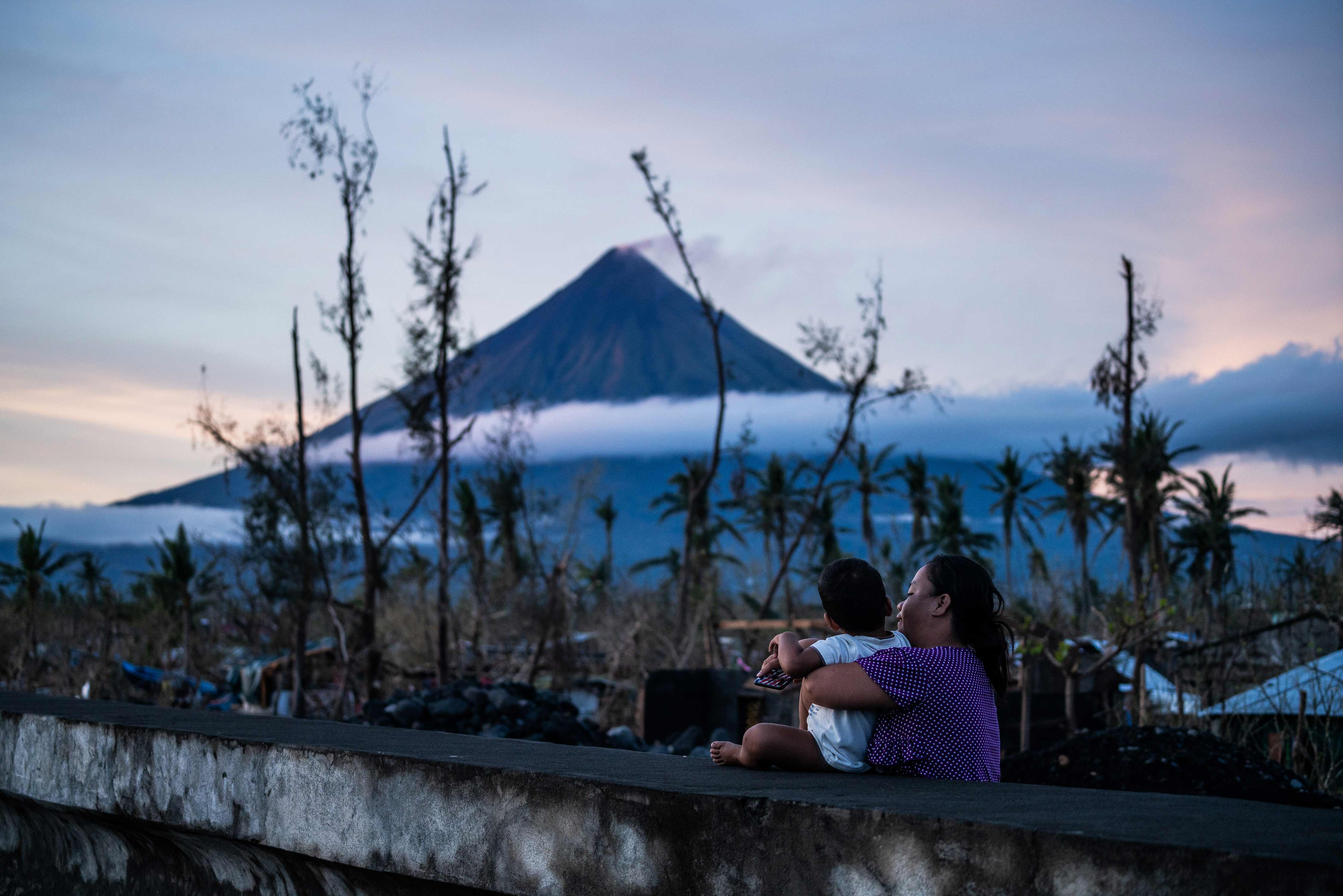
Chirica looks away as the sun sets. Photo OCHA/Martin San Diego
Chirica Guimba, Philippines
Chirica Guimba, 26, had saved up to build a small house by the beach in Barangay Baybay in Molinao, Albay, the Philippines. But on 1 November 2020, Typhoon Goni made landfall in the province. It destroyed her dream house and most of the coastal village.
The Philippines is one of the world’s most disaster-prone countries, with an average of 25 typhoons per year. Typhoon Goni, the strongest of 2020, blew away roofs, toppled structures and caused severe flooding and landslides. In Virac, the capital of Catanduanes, between 80 and 90 per cent of houses were damaged.

Nguyen Van Hat, his wife and daughters in front of their flood-damaged house. Photo UNICEF/Viet Hung
Nguyen Van Hat and Ho Thi Ha, Vietnam
Nguyen Van Hat, 48, and Ho Thi Ha, 37, live in Loc Thuy commune, Le Thuy district, Quang Binh, an area of Viet Nam that was severely affected by Typhoon Molave. They are now worried for their children’s future, as flooding stole the family’s only source of income and biggest assets: the two buffaloes they received from a charity organization.
When the floods arrived, the family was evacuated by local authorities. But because he was worried for the two buffaloes, Nguyen Van Hat returned in a small wooden boat, which he used for fishing. The boat capsized in high waves and strong winds, but luckily Nguyen Van Hat was close to his home; he managed to swim there and take shelter in the attic.
He survived three days with no food or potable water before being rescued by the authorities. But the family’s furniture was damaged or swept away by the floods and they now have nothing.
In the second part of 2020, Viet Nam experienced a succession of tropical storms and typhoons, which caused record rainfall and widespread flooding in much of the country’s central areas.
Carlota Rosario, Mozambique
Carlota Rosario, 27, and her baby, Nunesh, live in the Shibabuara area in Pemba, Mozambique. She lost everything when Cyclone Kenneth made landfall in the northern province of Cabo Delgado. Water entered her house and washed away all her family’s belongings. With her baby, Carlota sought refuge in a nearby school and relied exclusively on humanitarian assistance to survive.
Here are her words:
Cyclone Kenneth dumped rain for days and wiped out some villages, displacing tens of thousands of people. They needed everything, from food to clean water and shelter.
With wind gusts of up to 220 km/h, Kenneth became the strongest cyclone to ever hit the African continent, leaving 374,000 people in need of humanitarian assistance. It was the first time in recorded history that two strong tropical cyclones hit Mozambique in the same season.
Mozambique faces recurrent and multiple climate shocks. Since Cyclone Kenneth, two consecutive years of flooding in Cabo Delgado have severely impacted people’s resilience and capacity to recover. The central part of the country was hit by two storms, Tropical Storm Challene and Cyclone Eloise, between December 2020 and January 2021. Meanwhile, southern Mozambique has faced recurrent droughts in recent years, leading to high food insecurity.

Nadia, her mother and their neighbours in front of their destroyed house. Photo OCHA/Charlotte Cans
Nadia Meio, Mozambique
Nadia, 17, lives with her two sisters and mother. Nadia recalls the horror of 14 March 2019, when Cyclone Idai made landfall in Beira, central Mozambique.
"It started getting worse around 8 p.m. The wind was so strong that roof tiles started flying. We huddled together in one room but then the house started to collapse. We were so scared. We were only praying to God. We fled to a neighbour’s house where we stayed until morning. When we came back, we found the house like this. We do not have any money to rebuild it."
"I had to stop studying to take care of my mother, who is very sick. But I want to find a job to be able to help her, give her a better life, build a good house for her and be able to afford her medication."
Nadia has never heard of climate change.
"I don’t know why the weather is like this," she said. "But I heard on the radio that these cyclones will become more frequent here in Mozambique."

Mateboko Hlashla in the village of Makoabating, Lesotho. Photo IFRC/Matthew Carter
Mateboko Hlashla, Lesotho
Situated high in the hills of east Lesotho, Makoabating village is particularly exposed to the elements. The wind whips between the stone houses with thatched roofs that are typically found hunkering into the hillsides in this part of the country.
"Our village is known for having a high production of vegetables," said Mateboko Hlashla, 60. "But the drought that we have experienced has affected so many families. Livestock have died – there is not enough grass for them to graze."
"It’s been dificult to feed my family. We do not have enough water. The reliable water sources have dried up. In most cases when we don’t have enough water the poor sanitation comes in. We will be unlucky enough to have diarrhoea, because in that case we drink water from the same stream as the livestock – dogs and everything."
"But the most painful thing is that we normally sell our livestock in order to get enough cash so that we can buy what the kids need for school. But now that we have lost a lot of livestock it’s not definite the children will be going to school."

Secundino stands in front of his damaged house. Photo IFRC/Johannes Chinchilla
Secundino Orellana, Honduras
Secundino Orellana, 68, had lived in the same place for 30 years. But he became homeless overnight when Hurricanes Eta and Iote destroyed large parts of Honduras.
"We stayed because we wanted to save the little that we had, but we could not save the house."
"Thank God we were able to receive some help. We have some friends from other places who have remembered us, and also the Red Cross, who has come all the way here to help us."
Hurricane Eta made landfall in Nicaragua on 3 November 2020 as an extremely dangerous Category 4 hurricane. Its heavy rains caused flooding and landslides, and damaged infrastructure, homes and crops in all Central American countries, but with extensive damage to Guatemala, Honduras and Nicaragua.
Ten days later, Hurricane Iota made landfall in Nicaragua and the Gracias a Dios region as a dangerous Category 5 hurricane. Flooding and mudslides in Guatemala, Honduras and Nicaragua were exacerbated by Hurricane Eta’s recent damage to those countries.
"I thank God for my life. It’s very painful to lose everything one owns, but the most important thing is to save one’s life. You have to endure. All of us lost everything. The water washed the houses away. I have been living here for 30 years. I have never seen anything like this before."
"We are fighting to survive. We can’t give up, because we have to look forward."

Nneheiyg draws water from a roadside spring in December 2019. Photo IFRC/Matthew Carter
Nneheiyg Smith, Lesotho
As she draws water from a roadside spring in Ha Kutoane, Thaba-Tseka, Lesotho, Nneheiyg Smith, 70, explains what she is going through:
"This is not a normal thing to do. We have a water system in our village but it dried out, so we have to come to this one. This is actually an old and neglected spring. But because the taps are dry, I had to come here."
Lesotho has been severely affected by drought in recent years, creating emergency levels of food insecurity.
"I have never seen this [level of drought] before. I was told there was something like this in 1933. 2015 was bad, but this is worse."
The scarcity of water makes life very dificult for people in Nneheiyg’s village. “People line up here every morning. At 4 or 5 o’clock in the morning they line up here. Some of them are going up in the mountain – there’s another source one hour away and one hour back."
"When I was growing up, when I was still young, we had seasonal rains that were named. There was a lot of rain. We were able to plant everything we wanted at any time. We used to have livestock, as the grazing was good. But now everything has changed. The time we used to have rain – the rain doesn’t come. Instead we are expecting dust or wind, which can come at any time. I’m aware that things have changed."
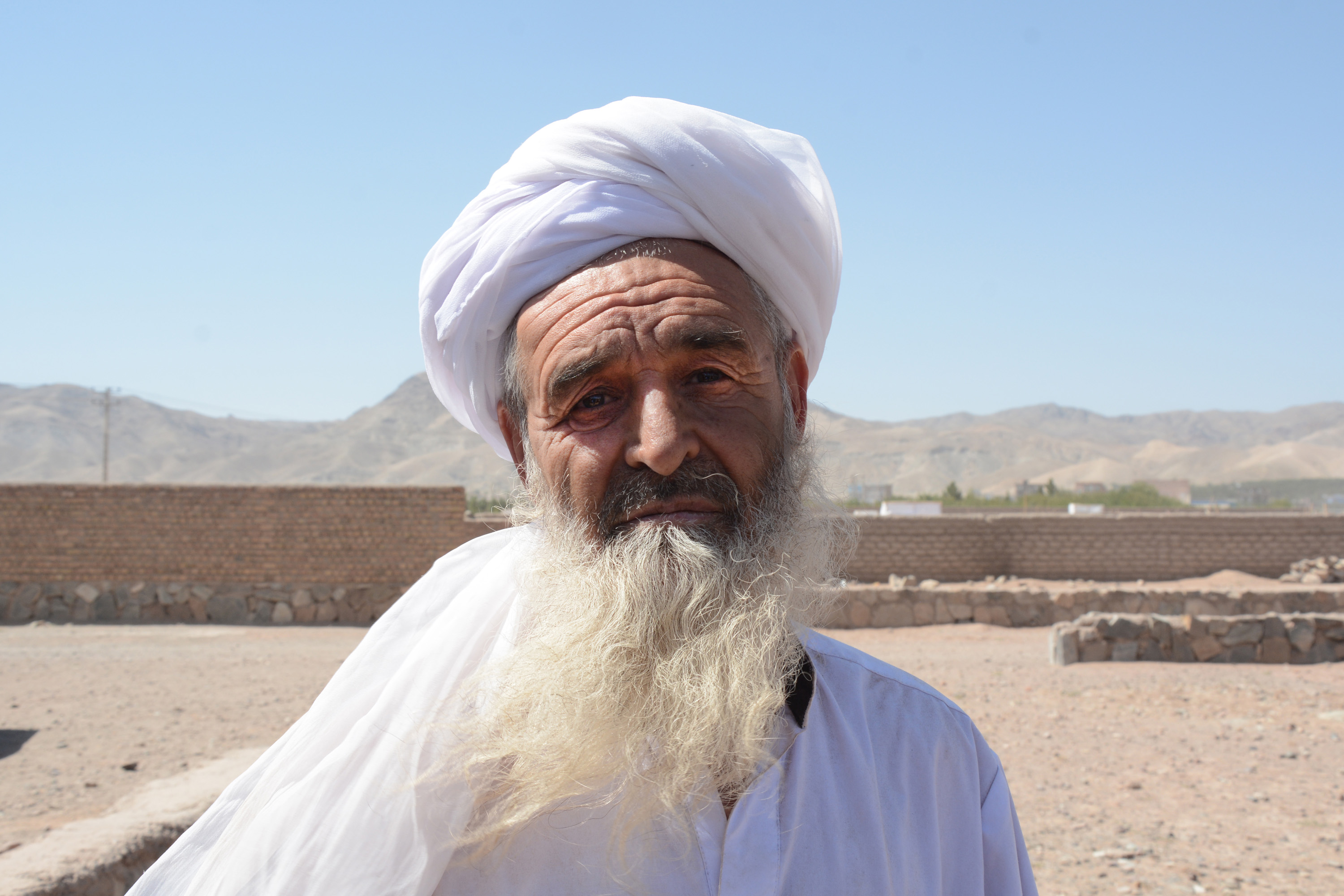
Portrait of Mohamed. Photo OCHA/Philippe Kropf
Mohamed Qadis, Afghanistan
"When the harvest failed, I sold my animals," said Mohamed Qadis, a farmer from Afghanistan’s Muqur District in Badghis, who now lives in an informal displacement site in Muslemabad.
Mohamed stayed on his plot of land until the money ran out. Then he decided to leave for Hirat City.
In 2018, a drought decimated the livelihoods of tens of thousands of households in the rural north-west of Afghanistan, which is one of world’s 10 most vulnerable countries to climate change. During the past 30 years, nearly all of its 34 provinces have been hit by at least one disaster. At the same time, a long-standing conflict has killed and injured thousands of people and displaced millions.
According to the UN’s Refugee agency (UNHCR), weather-related events over the past decade triggered an average of 21.5 million new displacements each year – more than twice as many as the displacements caused by conflict and violence.
"The prices were way too low. I sold them for a fifth of their real price. But I could not wait to sell, I had no choice. Twenty of my sheep had already starved because I had no fodder for them and no water."

Portrait of Tonima. Photo OCHA/Anthony Burke
Tonima Mehzabin Islam, Bangladesh
Tonima is a project officer with CARE Bangladesh. CARE provides health and gender services to women and adolescent girls affected by the floods in Kurigram, with support from CERF. Women can be subjected to increased violence during disasters, such as increased domestic violence or sexual harassment, both at home and in shelters.
CARE helped create women-friendly spaces in Kurigram, which are crucial. Tonima said: "Women feel safer and more comfortable to speak in these spaces. It’s easier to gain their trust and for them to share the many issues they are confronted with in their lives, whether it is related to gender-based violence, domestic violence, harassment during or after disasters, or anything else."
"We also have specific group discussions, during which we try to identify risk zones for communities. We try to understand where they feel unsafe, where they don’t have electricity, or where they don’t have access to potable water."
Something as simple as giving a woman a torch can make a huge difference.
"In shelters there is sometimes no light and there are men everywhere. At night, if a woman wants to go to the bathroom or somewhere else, having a torch is crucial for her safety."

Sophia sits at the site of her destroyed home in Talise village, Central Sulawesi. Photo UNICEF/Wilander
Sophia Angelica Majid, Indonesia
Eleven-year-old Sophia Angelica Majid lost her home in the powerful 7.4-magnitude earthquake and tsunami that devastated Talise village, Central Sulawesi, Indonesia, on 28 September 2018.
Sophia will always remember how she and her family ran desperately to escape the waves that engulfed large swathes of the shoreline. But before fleeing, Sophia reacted quickly: she grabbed two mobile phones. They became the family’s lifeline in the following chaotic days, as they tried to find food, water and information on where the rest of their family had sought refuge.
Sophia now sleeps in a tent shared with neighbours and nine other family members. She no longer has a school bag, and her laptop full of homework notes, her computer games and her favourite Disney movies, Frozen and Moana, are lost.
The Government of Indonesia led the response, and the UN was ready to support in the critical hours and days after the catastrophe. UNICEF transported 94 metric tons of essential emergency supplies through an airbridge from the neighbouring island of Borneo. Sophia’s school was one of the first to receive the 450 school tents and 300 school-in-a-box kits that UNICEF delivered to over 1,400 affected schools, more than 184,000 children and nearly 13,000 teachers.

Portrait of Mongl. Kurigram district, Bangladesh. Photo OCHA/Anthony Burke
Mongl, Bangladesh
Mongl is 28 years old. Her husband died of a heart attack two years ago. She has two children: a 15-year-old boy and a 10-year-old girl. When the 2019 floods hit, Mongl’s chicken and ducks were washed away. The flood water entered the house, and the family and their only goat had to stay on their bed for days to stay dry.
With support from CERF, Mongl received a small cash grant that allowed her to buy new chickens and another goat. She also received training to help her recognize symptoms of various illnesses in animals and what medicines would cure them. She is now preparing for the next flood by building a wooden platform so that her family and livestock can be above high water.
Heavy monsoon rains in Bangladesh in July 2019 triggered widespread flooding, with the major river systems of Jamuna and Teesta reaching their highest flood levels in a hundred years. The disaster affected 7.6 million people, damaged or destroyed the homes of almost 600,000 families and displaced more than 300,000 people. The flooding destroyed $112 million worth of crops and killed $83 million worth of livestock and poultry.

Ahmedou Ag ElBokhary in the Mbera camp plant nursery. Photo UNHCR/Viola E. Bruttomesso
Ahmedou Ag ElBokhary, Mauritania
When Ahmedou Ag ElBokhary arrived at Mbera refugee camp in south-east Mauritania, after fleeing Mali’s conflict in 2012, he was surprised by the lack of vegetable gardens in nearby villages. Like much of the Sahel region, Mali and Mauritania are feeling the effects of climate change – from increasingly unpredictable rainfall, to land degradation and desertification.
But back in Mali, Ahmedou and his compatriots had found ways to coax life from the soil. They conserved the little water available by using sunken seed beds and compost, and they planted seeds that could withstand the heat. When they fled to Mauritania, they brought some of those seeds with them and started small gardens in the camp, using the same techniques to cope with the hot, dry conditions.
"We brought the papaya here, people thought we couldn’t grow it," says Ahmedou, who worked for the Regional Chamber of Agriculture in Timbuktu before he fled Mali. "This year we were asked to make a papaya nursery. The people of Bassikounou and all the villagers came to see. We taught them how to grow it, and they showed us other seeds we didn’t know about. There is a lot of knowledge that we are exchanging."
For refugees like Ahmedou, helping to protect the local environment is a way of giving back to the community that has hosted them for nearly a decade.
"We want to go back home, but the projects we have are projects for the area. If we leave, people will not say that the refugees made them miserable, they will say that we returned with our heads held high."
He adds: "There is a proverb in Tamashek that says, ‘Whoever has planted a tree has not lived in vain’."
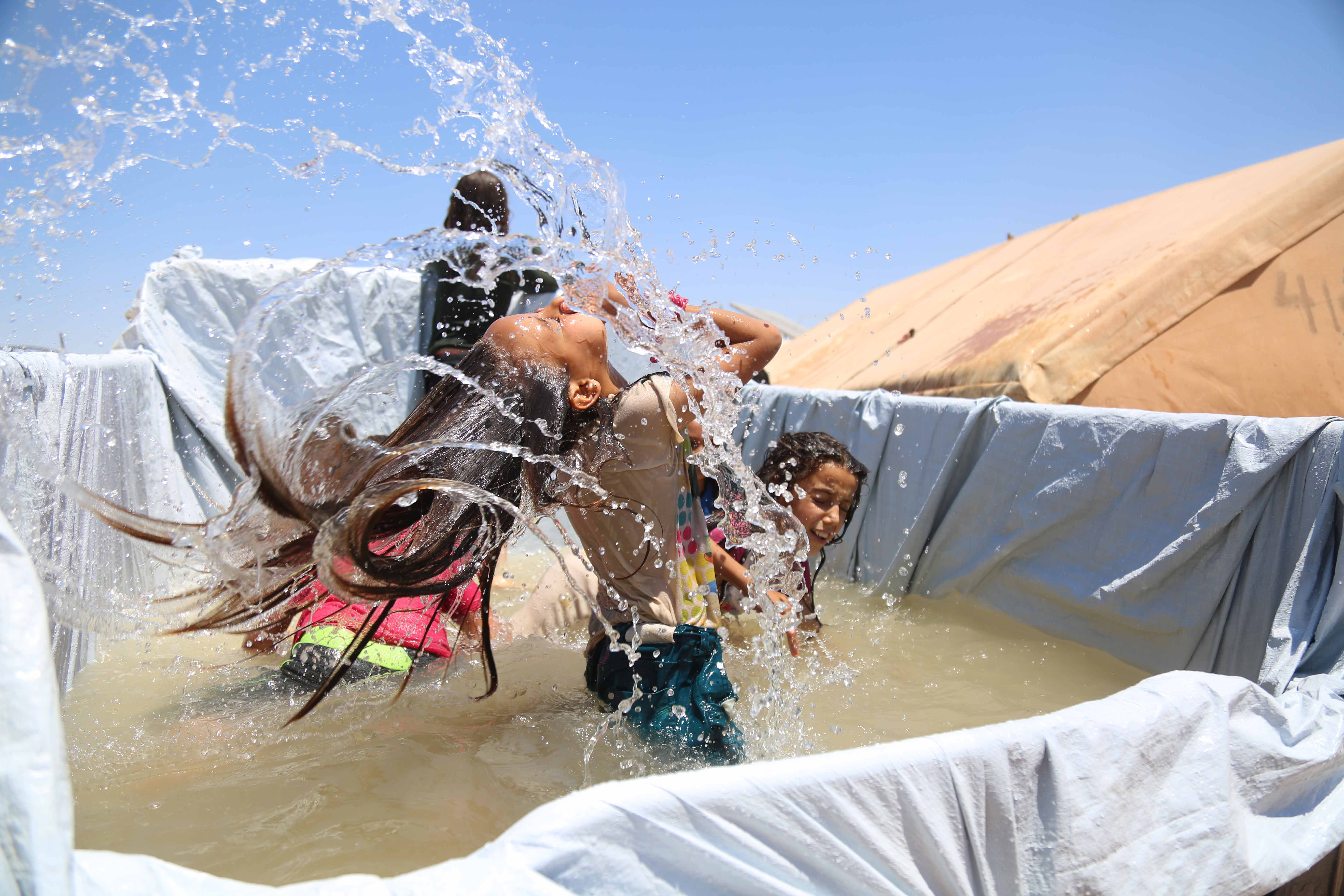
Bushra plays with her friends in the back of a water-filled truck in Khair-al-Sham displacement camp, north-west Syria. Photo OCHA/Ali Haj Suleiman
Bushra, Syria
Bushra and her family fled Kafrouma, south of Idlib, in 2019. An escalation of fighting displaced 1 million people, most of whom were women and children. The camp, which has a school, receives food assistance, and NGOs supply water by truck from a nearby well.
Bushra and her friends escape the soaring summer temperatures by sitting in the back of a truck that has been converted into a pool. Drought is a growing concern in Syria; rainfall this year has been poor, and the water levels of the Euphrates River are at a historic low.
Millions of people are without electricity and clean water, and families are resorting to using unsafe water sources, further undermining the country’s fragile public health. With limited availability of COVID-19 vaccines, access to sanitation and hygiene is a critical first line of defence against virus transmission. The drought could also harm farming in a country where millions of people already don't have enough to eat.
The UN's humanitarian partners deliver millions of litres of emergency water to families each day, as well as food, medicine, vaccination, shelter, and other life-saving aid. They also provide 1.4 million people with agriculture and livelihood activities. But much more needs to be done to reduce the impact of the global climate crisis that is increasing suffering in a country already beset by crises.

Rokaya (right) and her friend Jamila spend several hours every day collecting water for their families and themselves. Photo UNICEF/Juan Haro
Rokaya and Jamila, Niger
Rokaya is 15 years old. She has 11 brothers and sisters. She wakes at 6 a.m. every day to fetch water. She’s able to fill two 25-litre jerry cans for the whole family. "With all this we have to scrub, shower, cook and drink water. It is not enough for everyone, so I have to return in the afternoon."
Jamila, 13, is Rokaya’s friend from their village in Gomozo, Maradi region, Niger. They've been fetching water together for years. Jamila has the same problem. She explains: "My mother taught me how to fill these drums when I was little. When they are full they are too heavy, and it hurts my neck and kidneys. But my family depends on this water."
"Other times, especially in the afternoon, we start doing homework after coming from the well and we are exhausted. Besides, we have to help our mothers cook dinner and housework. It’s not easy."
Jamila adds: "During the hot season the need for water is greater. It is too hot, and we consume more water at home. So there are days that going to school becomes complicated."
In the Sahel, a combination of conflict and climate shocks has significantly increased the number of children who are out of school. It is estimated that 7 million children are out of school in the region.
Children who miss out on school face a greater risk of exploitation, especially girls, who may be forced into early child marriage. Children who leave school are less likely to return, reducing their opportunities for the future.
"We miss school hours by going to collect water. It's a girl’s chore. Sometimes we are late to class and the teacher scolds us."
"If I can finish my studies, I would like to dedicate myself to something related to education. Something that allows me to learn and learn."
We need to pressure world leaders to take meaningful climate action for those who need it most.
They must commit to putting vulnerable people front and centre at the UN climate summit (COP26) in November.
This is a race we must win.
#TheHumanRace
*The Central Emergency Response Fund (CERF) is a humanitarian fund established by the United Nations General Assembly on December 15, 2005 and launched in March 2006. With CERF’s objectives to 1) promote early action and response to reduce loss of life; 2) enhance response to time-critical requirements; and 3) strengthen core elements of humanitarian response in underfunded crises, CERF seeks to enable more timely and reliable humanitarian assistance to those affected by natural disasters and armed conflicts.
The fund is replenished annually through contributions from governments, the private sector, foundations and individuals. From the fund’s inception untill August 2013, donors include 125 member states and more than 30 private donors and regional authorities.
This exhibit was launched in August 2021

